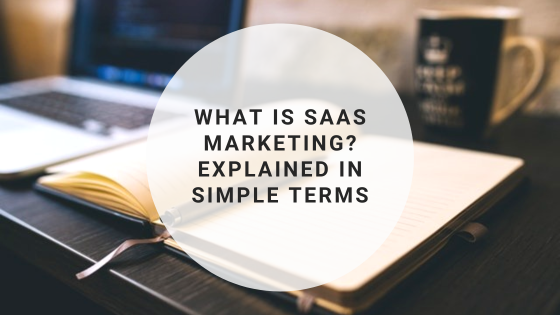
Selling physical products is pretty straightforward. People see an item that fulfills their needs, like a kitchen knife set for food prep, and make a decisive purchase.
Marketing non-physical products can be a little more complicated. The process is often referred to as SaaS marketing. Here, we will explore everything you need to know about SaaS marketing.
Defining SaaS Marketing
SaaS, or software-as-a-service, is when businesses sell non-tangible products.
SaaS marketing is the process of advertising and selling subscription-based products. Businesses often sell these products in cloud-based applications. They keep consumers happy by performing regular updates and enhancing the software’s functionality.
Businesses that operate on a SaaS model do not make their money from one-time purchases. Rather, they need to keep customers interested in what they have to offer. They need to consistently prove their worth to potential and current customers.
How Does a SaaS Sales Cycle Differ from Traditional Sales Cycles?
The length of a SaaS sales cycle will differ from that of a traditional one. Some SaaS sales cycles will be shorter, as customers only have to pay a small amount of money every month instead of thousands of dollars at once to own software.
However, other businesses’ SaaS sales cycles will take longer. A lot of clients will need to be convinced of the value that your product can offer. This will involve persistent sales tactics and regular interaction with your brand.
Ways You Can Market Your SaaS Products
Try out the following tactics to convince your clients that your subscription is worth the monthly investment:
Develop a Solid Content Marketing Strategy
Some ways you can develop a solid content marketing strategy include:
- Exploring different keyword and backlinking opportunities
- Understanding your target audience
- Looking into what your competitors are doing
- Write high-quality content and share it properly
Offer a Free Trial
Even if you have a strong content marketing strategy, clients will only be able to truly experience the benefits of your product by trying it out for themselves.
Let customers know what they’ll be getting. Don’t leave them guessing.
When they use your product, clients can determine if it will meet your needs and if it’s worth the money.
The research shows that free trials are incredibly effective for SaaS businesses. Marketing Charts reported that nearly two-thirds of free trials convert customers.
Send Out Customized Emails
Collect as many of your potential clients’ emails as possible. Send out emails with customized messages depending on what stage of the sales cycle individuals are in.
Implement the Customer Feedback You Receive
Encourage each client to offer their experience with your product and any criticism they have. Use your findings to update your product and marketing efforts.
Find Influencers to Promote Your Product
Enlist an influential third-party to promote your product to its audience. This social media influencer or creator can eagerly get your brand in front of many potential customers.
What Are the SaaS Marketing Metrics I Should Track?
To ensure your SaaS marketing campaign is going well, you should measure its progress with tangible numbers. Here are some important metrics you should keep track of:
1. Customer Churn
Customer churn, which is also known as customer attrition, is the rate at which customers cease doing business with your brand.
This is an important statistic to keep an eye on. Retaining customers is a lot cheaper than acquiring new ones, so you want to monitor your customer churn and make sure it doesn’t spike too high.
Oftentimes, customer churn has nothing to do with price. According to Beyond Philosophy, one of the major reasons for customer churn is poor customer service. In the SaaS world, this can mean anything from bad onboarding to a lack of active customer support.
2. Customer Acquisition Cost (CAC)
CAC is the amount of money it costs to gain new customers. For example, if your business spends $500 on marketing for the year and gains 5 new clients, the CAC is $100 per customer.
3. Customer Lifetime Value (CLTV)
Because of the nature of subscription-based products, you need to assess your customer lifetime value. This metric gives you an idea of how much profit one client will bring for the entire time they have a relationship with your brand.
This metric can help businesses set a limit on their CAC.
4. CAC-to-CLTV Ratio
The CAC-to-CLTV ratio is the ratio of customer acquisition cost to customer lifetime value. You want this number to be as small as possible.
This metric demonstrates the relationship between the cost of acquiring a customer and how much value can be attributed to him or her.
When it comes to buying SaaS products, clients do not need to commit to anything for the long-term. Therefore, SaaS marketers need to focus on not only acquiring new clients but also retaining old ones.
Are You Ready to Market Your SaaS Products?
If you’re ready to market your SaaS products, now is the time to start! Use this expert advice to get started on your journey.